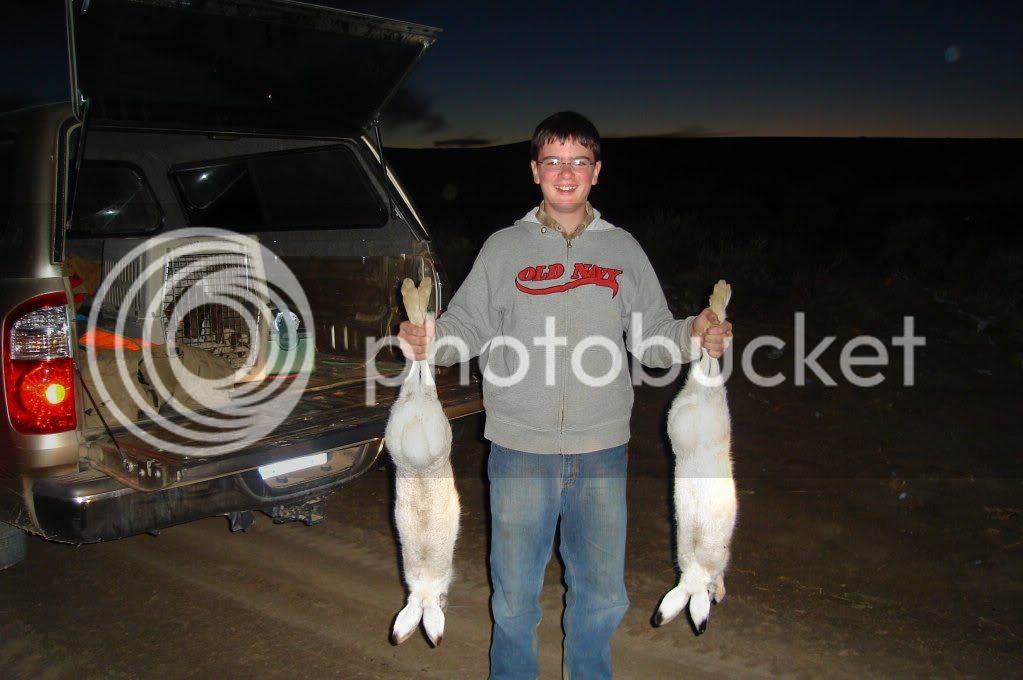paulvallandigham
Passed On
- Joined
- Jan 9, 2006
- Messages
- 17,537
- Reaction score
- 94
If you were asking this same question of modern shotgun shooters, with choked guns as the NORM, and higher velocities were available due to the use of smokeless powders, the answer would most likely be #6 shot.
However, since most BP shotguns are Not Choked, and your velocity is not anywhere near what you get with smokeless powders, Going up in size to #5 shot gives you more pellet ENERGY in patterns out to 35-40 yards. Because we are not restricted by chamber or cartridge length to using only a limiter amount of shot in our barrels, you can add a bit more shot pellets to the load you use to help compensate for the lack of # of pellets by using #5 shot( 170 pellets per oz.) instead of #6( 225 pellets per oz.).
BrownBears' comment about getting more "pass-thru shots on snowshoe rabbits is relevant and important( when using #5 shot vs. #6): LIke most birds you are likely to hunt, rabbits, and squirrels are thin skinned animals, and small in size. While I was trained to "FEEL: the east I am preparing to eat, and remove any shot pellets I find still in the birds, etc. many hunters do not do, or perhaps know how to do this. NO one wants to bite down on a piece of shot during their meal. It happens in spite of our best efforts, but its no fun. You can do damage to dental work.
Therefore, using a pellet size sufficiently large to pass completely thru the body of a small game animal not only insures damage to internal organs to cause rapid death, but eliminates the chance of biting down on a piece of shot.
Ya got to "get-'em" before you can eat-em".
With a smokeless powder shotgun, I have taken pheasants with loads using #7 1/2 shot, #6 shot, #5 shot, and #4 shot. I prefer to use #5 shot now, and no longer use the others.
Particularly when I don't have a dog to retrieve or point the birds, I need #5 shot to anchor them hard, so I can find them where they fall. Standing corn and soybean fields can be difficult places to find your birds. I have had too many cripples get away with smaller sized shots, and no retrievers to find them and run them down. :hmm: :thumbsup:
However, since most BP shotguns are Not Choked, and your velocity is not anywhere near what you get with smokeless powders, Going up in size to #5 shot gives you more pellet ENERGY in patterns out to 35-40 yards. Because we are not restricted by chamber or cartridge length to using only a limiter amount of shot in our barrels, you can add a bit more shot pellets to the load you use to help compensate for the lack of # of pellets by using #5 shot( 170 pellets per oz.) instead of #6( 225 pellets per oz.).
BrownBears' comment about getting more "pass-thru shots on snowshoe rabbits is relevant and important( when using #5 shot vs. #6): LIke most birds you are likely to hunt, rabbits, and squirrels are thin skinned animals, and small in size. While I was trained to "FEEL: the east I am preparing to eat, and remove any shot pellets I find still in the birds, etc. many hunters do not do, or perhaps know how to do this. NO one wants to bite down on a piece of shot during their meal. It happens in spite of our best efforts, but its no fun. You can do damage to dental work.
Therefore, using a pellet size sufficiently large to pass completely thru the body of a small game animal not only insures damage to internal organs to cause rapid death, but eliminates the chance of biting down on a piece of shot.
Ya got to "get-'em" before you can eat-em".
With a smokeless powder shotgun, I have taken pheasants with loads using #7 1/2 shot, #6 shot, #5 shot, and #4 shot. I prefer to use #5 shot now, and no longer use the others.
Particularly when I don't have a dog to retrieve or point the birds, I need #5 shot to anchor them hard, so I can find them where they fall. Standing corn and soybean fields can be difficult places to find your birds. I have had too many cripples get away with smaller sized shots, and no retrievers to find them and run them down. :hmm: :thumbsup:





